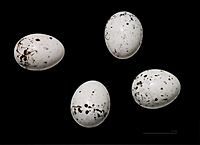Booted warbler facts for kids
Quick facts for kids Booted warbler |
|
|---|---|
 |
|
| Conservation status | |
| Scientific classification | |
| Genus: |
Iduna
|
| Species: |
caligata
|
 |
|
| Distribution of Booted Warbler Summer Resident (Breeding) Winter Visitor (Non-breeding) | |
| Synonyms | |
|
Hippolais caligata |
|
The booted warbler (Iduna caligata) is a small songbird. It belongs to a group called Old World warblers. These birds are known for their beautiful songs.
Booted warblers live in many parts of the world. They breed, or have their babies, in places like central Russia and western China. When winter comes, they fly south. This journey is called migration. They spend winter in the Indian subcontinent, even as far south as Sri Lanka. In recent years, they have started breeding further west. You can now find them nesting in places like Finland.
Contents
About the Booted Warbler
The booted warbler is a small passerine bird. Passerine birds are often called perching birds. They are found in open areas. These areas usually have bushes and tall plants.
What It Looks Like
Booted warblers are small, even for their type of bird. They have pale brown feathers on their backs. Their undersides are whitish. Their sides have a light, yellowish-brown color. The feathers on the outside of their tail have light edges. They have a short, pale stripe above their eye. This stripe is called a supercilium. Their beak is strong and pointed.
Where It Lives
These birds prefer open spaces. They like areas with bushes and other tall plants. This helps them find food and build their nests.
Nests and Eggs
Female booted warblers lay three or four eggs. They build their nests in bushes or other thick plants. Like most warblers, they mainly eat insects. This makes them insectivorous.
The Name's Meaning
The name Iduna comes from Norse mythology. Iðunn was a goddess of spring and new life. The word caligata is Latin. It means "booted," like wearing boots. This name might refer to the bird's leg feathers.
Gallery
-
Booted warbler seen in Udumalpet, Tamil Nadu, India





